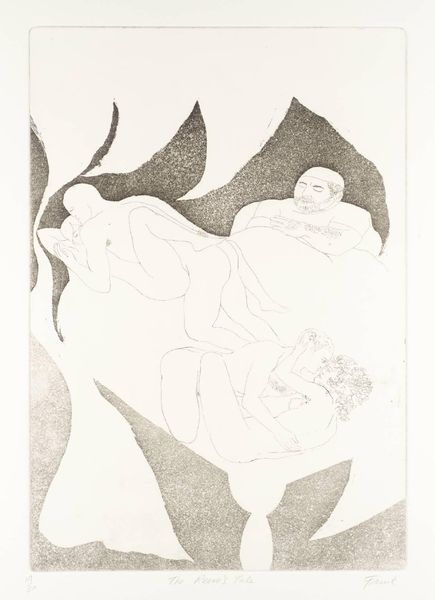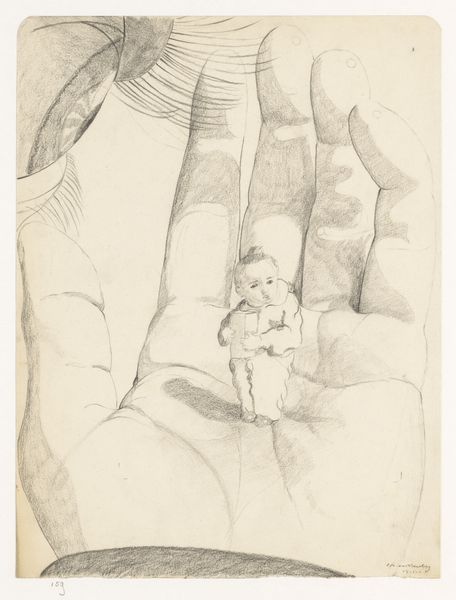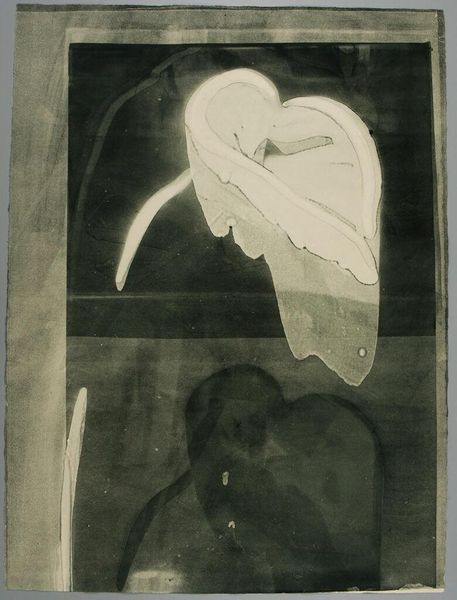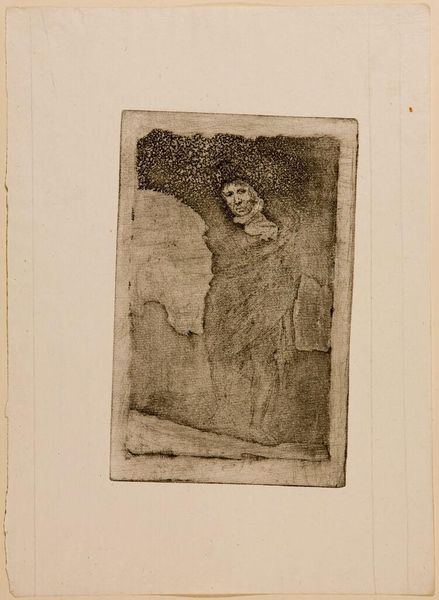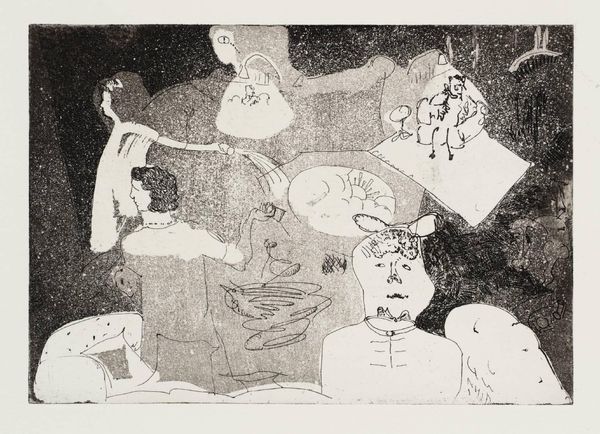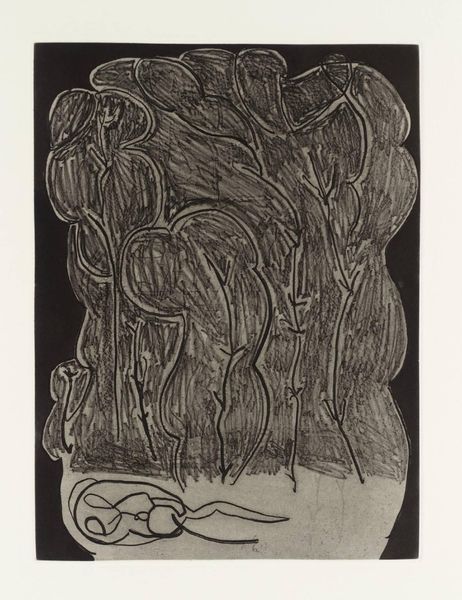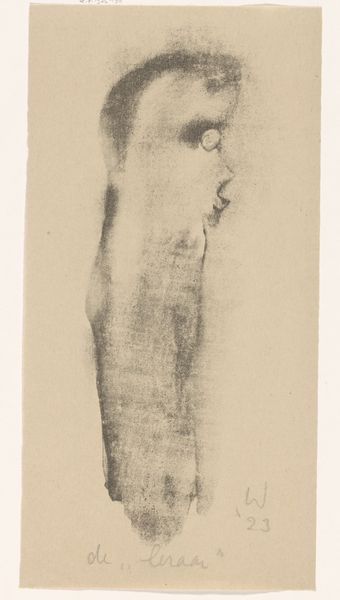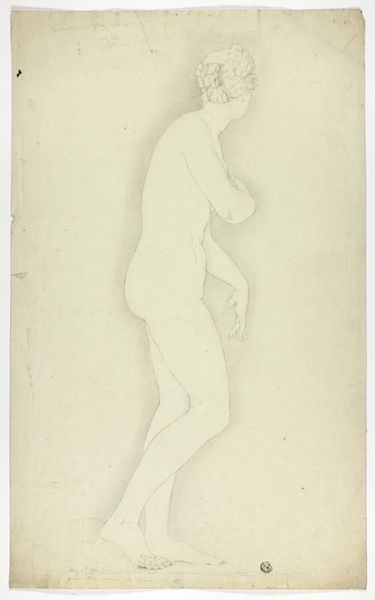
Dimensions: image: 500 x 345 mm
Copyright: © Frink Estate | CC-BY-NC-ND 4.0 DEED, Photo: Tate
Curator: Dame Elisabeth Frink, born in 1930, created this moving etching, "The Prioress's Tale," now part of the Tate collection. It’s striking, isn't it? Editor: It is, a solemn scene rendered in stark monochrome. There's such heavy feeling here, but what is its source? Curator: The image depicts a scene from Chaucer's Canterbury Tales, where a young boy is murdered for his devotion to the Virgin Mary. Frink often explored themes of victimhood and the abuse of power. Editor: Ah, yes! The slain boy becomes a potent symbol of innocence destroyed by intolerance, with the somber group looming behind him emphasizing the collective guilt. The lone kneeling figure hints at mourning. Curator: Exactly. And Frink made a powerful statement about the social climate through this imagery. It makes the viewer contemplate the forces that lead to such events. Editor: Definitely. There is a cultural memory embedded in the imagery. Thank you for this context, it has provided a powerful new perspective. Curator: It's been illuminating to analyze how the scene speaks to broader social ills.


